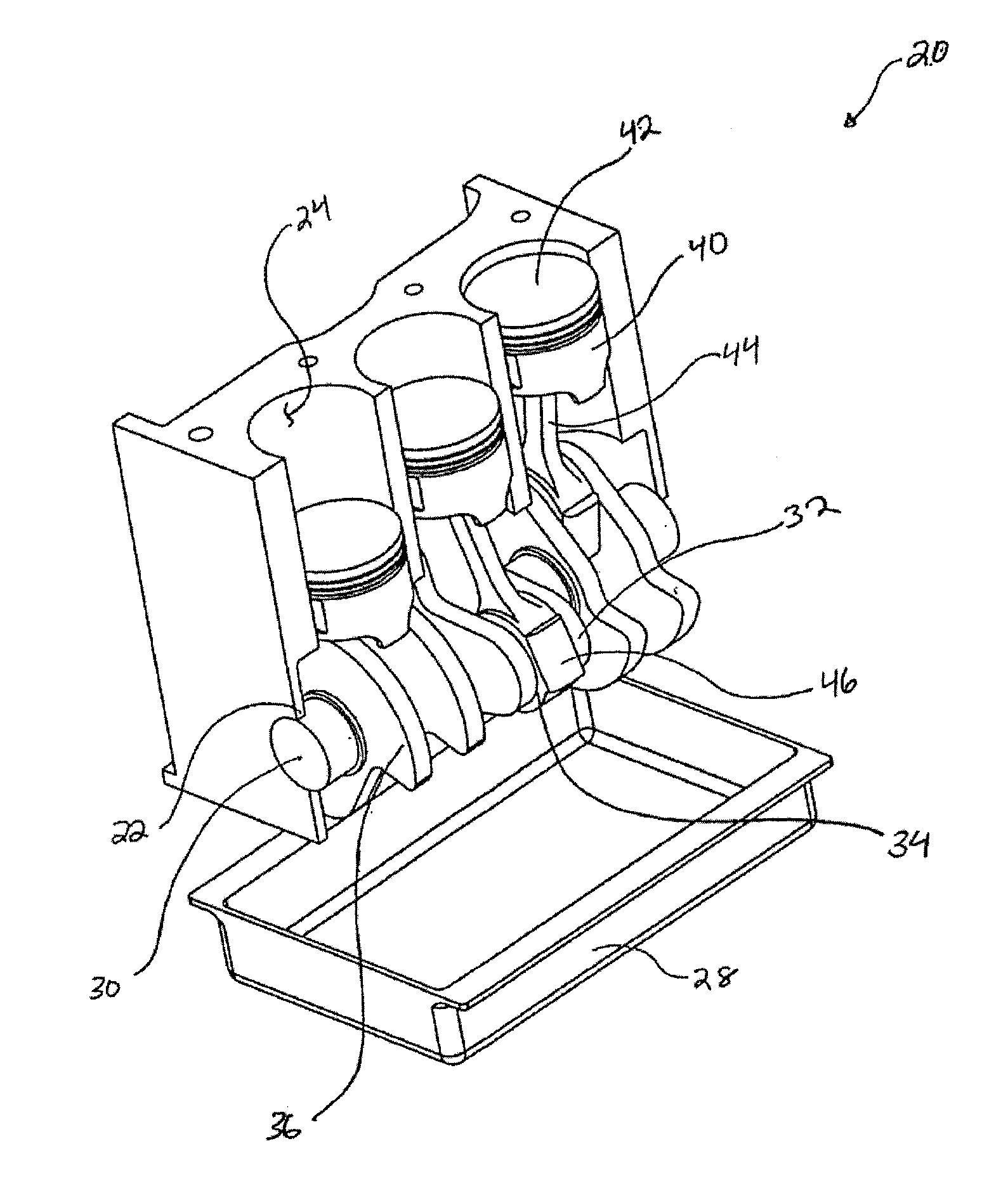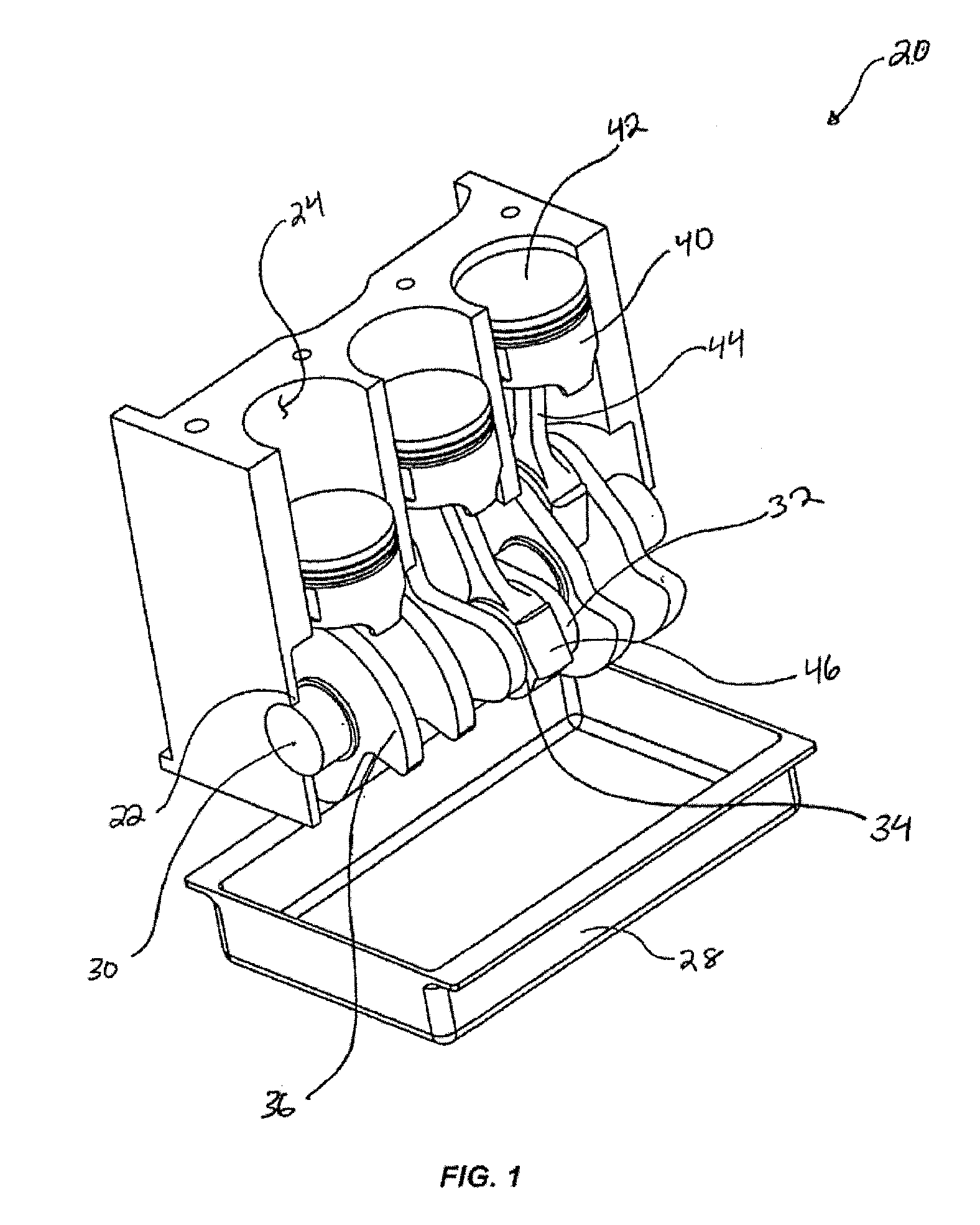High efficiency internal explosion engine
a high-efficiency, internal combustion engine technology, applied in the direction of crankshafts, machines/engines, crankshafts, etc., can solve the problems of inefficient rotary position mechanically, worst combustion condition, and inability to achieve the best combustion condition, etc., to achieve the effect of compression volum
- Summary
- Abstract
- Description
- Claims
- Application Information
AI Technical Summary
Benefits of technology
Problems solved by technology
Method used
Image
Examples
embodiment 100
[0062]FIGS. 5a-5i together illustrate a series of sequenced, sectional views detailing the progression of the compression and power strokes of the representative IE engine described above. More specifically, FIGS. 5a-5i describe one representative embodiment 100 of the present invention for maintaining the compressed air / fuel mixture of a reciprocating-piston engine at a constant volume and at a desired (e.g., peak or something less than peak) and selective compression ratio through a range or plurality of crank 112 positions, and delaying detonation or ignition of the compressed air / fuel mixture until the working piston 120 has passed through the top dead center position and the engine crank has rotated to a more mechanically advantageous position that allows the resulting explosive reaction products to perform more work and generate additional torque, as compared with prior related IC engines, due to the rapid expansion of the combustion chamber.
[0063]The embodiment 100 of the IE ...
embodiment 200
[0098]Illustrated in FIGS. 14a and 14b is another representative embodiment 200 of the present invention for maintaining the compressed air / fuel mixture of a reciprocating-piston engine at a constant volume and at a given compression ratio, such as a peak compression ratio, through a range of crank positions, and delaying detonation of the compressed air / fuel mixture until the working piston has passed through the top dead center position and the engine crank has rotated to a more mechanically advantageous position that allows the resulting explosive reaction products to perform more work and generate additional torque.
[0099]Instead of using the floating piston and floating piston cylinder to perform a “switching” process, embodiment 200 of the IE engine can instead employ a unique power linkage 208, hereinafter known as a “CRAM power linkage” or “CRAM”, to maintain the compressed air / fuel mixture at a constant volume and at a peak compression ratio through a range of crank position...
embodiment 260
[0110]Illustrated in FIGS. 18a-18b is a representative embodiment 260 of the CRAM power linkage having a tangential / pitch cam surface formed on the lobe of the power crank or throw 112. The term “pitch” is due to the truncated shape 264 on the circular portion of the crankshaft lobe 262, and a corresponding truncated shape 268 on the circular portion of the bearing or bore 266 formed inside the crank-hub of the connecting rod 216. These truncated surfaces are positioned and mated to operate as a cam and a cam track, respectively. The cam surface 264 on the crankshaft lobe can be concentric and tangential with the geometric concentricity of the throw of the crankshaft, while the cam track surface 268 within the crank-hub end of the rod can be concentric and tangential with the geometric concentricity originating from the center of the piston-hub of the rod at its opposite end.
[0111]During operation of the tangential / pitch CRAM 260 (FIGS. 18c-18f), the cam 264 and cam track 268 surfac...
PUM
 Login to View More
Login to View More Abstract
Description
Claims
Application Information
 Login to View More
Login to View More - R&D
- Intellectual Property
- Life Sciences
- Materials
- Tech Scout
- Unparalleled Data Quality
- Higher Quality Content
- 60% Fewer Hallucinations
Browse by: Latest US Patents, China's latest patents, Technical Efficacy Thesaurus, Application Domain, Technology Topic, Popular Technical Reports.
© 2025 PatSnap. All rights reserved.Legal|Privacy policy|Modern Slavery Act Transparency Statement|Sitemap|About US| Contact US: help@patsnap.com



